HISTORY
HISTORY
Battleship “George Averoff” | The ruler of the Aegean and the Glory of the Navy
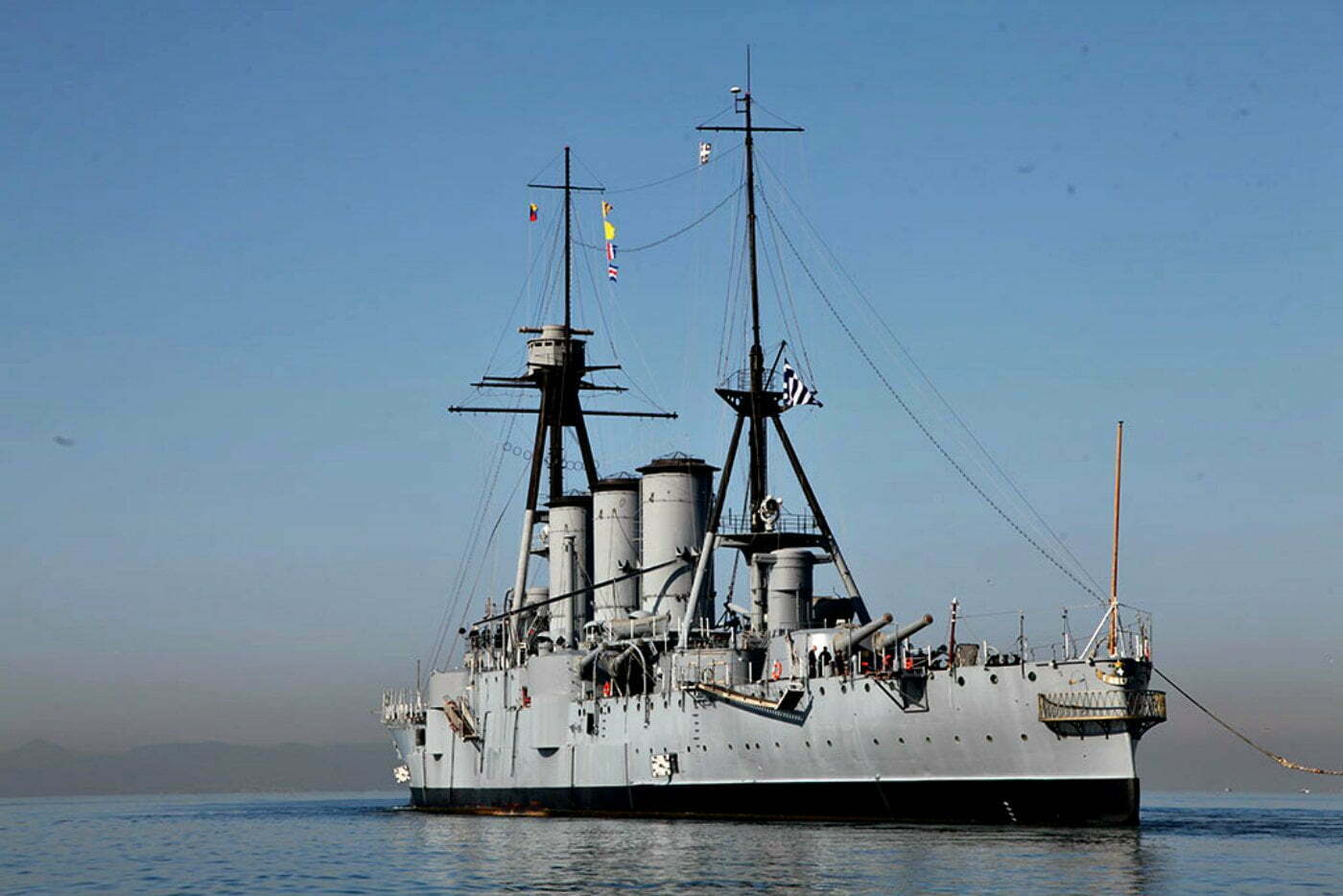
After the Greek-Turkish war in 1897, the Greek Navy had a minimal force of obsolete torpedo boats and three French warships built in 1889.
At the end of 1908, four new English and four German destroyers strengthened the Greek fleet, however, the Armored / Destroyer “Georgios Averoff”, the Glory of the Navy, was to be added to this force.
The ship was built at the Orlando shipyards in Livorno, Italy and was ordered as to be used by the Italian Navy. However, the Italian Navy canceled the order and Greece immediately paid 1/3 of the ship’s total value and the battleship came into its possession.
The amount of the advance payment came from the will of Georgios Averoff and amounted to 8,000,000 million gold drachmas, while the remaining amount of 15,650,000 gold drachmas was covered by the National Fleet Fund (NFF). The government spent 23,650,000 drachmas to acquire her. The 8,000,000 drachmas came from 20% of the total inheritance of George Averoff, which he bequeathed to the National Fleet Fund in 1899 (date of publication of the will). It is worth noting that the Turks also expressed interest in buying the ship.
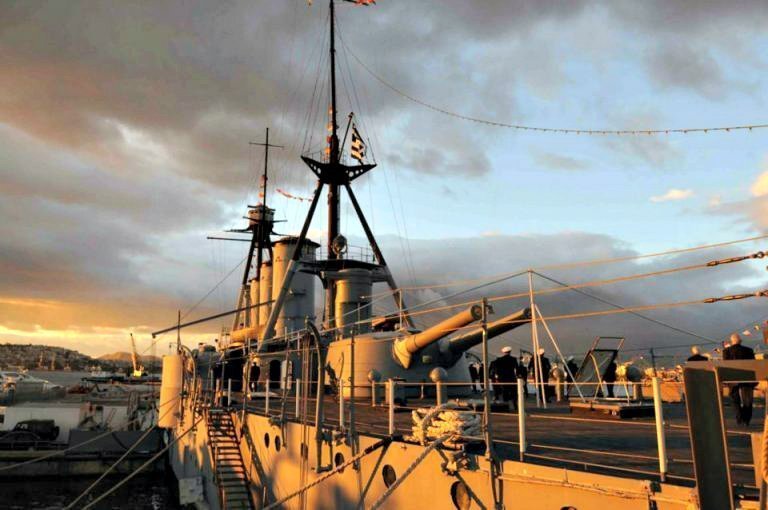
Battleship George Averoff © Floating Naval Museum Battleship “George Averoff”
The armored cruiser (as described more accurately) weighs 10,200 tons with 19,000 horsepower Italian engines, 22 French boilers, German generators and 190 and 234 mm ARMSTRONG English cannons. The maximum speed developed by the Battleship was 23 knots. The ship’s draft in maximum load was 7.5 meters and she had bow and stern turrets of 234 mm. The four side turrets had a barrel of 190mm.
The ship could carry a crew of 670 people and a maximum crew of 1,200 people.
“G. Averoff” was launched on March 12, 1910 (February 27 in the old calendar) and was delivered to Greece on May 15, 1911. On September 1, 1911 she sailed to Faliro, where she was received with great enthusiasm by the Greeks.
The Balkan Wars of 1912-13 are undoubtedly the most glorious war period of “G. Averoff”. With the start of hostilities in October 1912, the Greek fleet was called upon to achieve a particularly difficult combination of multiple objectives: to block the departure of the Ottoman fleet to the Aegean, to take possession of the islands of the northeast Aegean, to block the transport and supplies to the continental fronts of the Balkans as well as to protect the corresponding maritime transport of Greece and its allies.
The successful liberation of the islands of the northeastern Aegean and the domination of Greek weapons in the Battle of Elli and Lemnos resulted in “G. Averoff” to acquire symbolic dimensions in popular memory: a legend had already been born.

Battleship George Averoff © Floating Naval Museum Battleship “George Averoff”
For most of World War I, Greece remained neutral. However, in 1917 the government of E. Venizelos decided to join the war on the side of the Allies. The end of the war found Greece on the side of the winners. “G. Averoff” sailed to Istanbul and there raised the Greek flag as one of the victorious forces of World War I.
After the peace treaty was signed, “G. Averoff” along with the rest of the fleet transported the Greek troops to Ionia. Field operation developments in Asia Minor quickly drew the negative course that led to the disaster of 1922. “G. Averoff” was again found on the Asia Minor coast, this time to help transport troops and the uprooted Greek element.
With the start of World War II the battleship “G. Averoff” was again commanded as the flagship of the Greek fleet. However, following the collapse of the front in April 1941, the Ministry of the Navy ordered the self-immersion of the battleship in order not to fall into the hands of the enemy. However, the heart and mind of the Greek crews, during the departure of the remaining ships of the fleet in Alexandria, considered it unthinkable to do without the safe company of the heroic Battleship “G. Averoff”.
After the arrival of the battleship in Alexandria, the ship went to Bombay for general inspection and repair. Originally, “G. Averoff” was active in the Indian Ocean, with the mission of protecting convoys headed from Bombay to Aden. At the end of 1942 “G. Averoff” sailed to Port Side, where she participated in port protection missions.
After almost four years of absence, the glorious “G. Averoff” returned to Greece on the afternoon of October 16, 1944, transporting the then exiled Greek government and anchoring solemnly in Faliros bay. Between 1947 and 1949 the Battalion became a Fleet Headquarters in Keratsini. However, the ship was ‘aging’ and in 1952 her decommissioning was ordered.
From 1957 to 1983, the battleship was anchored in Poros. In 1984, the Navy decided to restore her. After thirty years of abandonment, the Battleship started its new course. That same year, the ship was towed by Poros and ended up in Faliro, where restoration work began. The amount of expenditure on stabilization – rehabilitation since 1985 is large and much of the spending came from donations from individuals, the most significant of which were the Republic of Cyprus, the Latsi family and the Onassis Foundation.
Today the ship-museum “G. Averoff” is a monument commemorating those who served and fell during her glorious history. The Naval Warship Museum “G. Averoff” has been a vibrant educational community for years, with daily visits of schools, institutions, organizations and a host of individuals. These visits also accomplish the second aspect of the donor’s vision, who wanted the ship, along with her national purpose, to fulfil an educational mission.
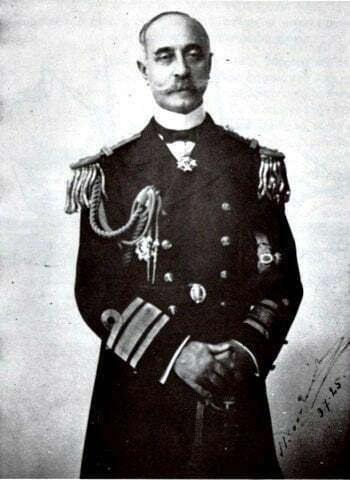
Admiral Pavlos Koundouriotis © Floating Naval Museum Battleship “George Averoff”
It is questionable if in the world history of the Navy we could meet another military ship that has been linked for almost half a century to the history and casualties of a national. Battleship “G. Averoff”, perhaps the only exception, along with the personality and patriotic ethos of Admiral Pavlos Kountouriotis, strongly associated her name with the shaping of historical events of national scope without ever knowing loss or dishonour.
Even after the peaceful epilogue of her military action after World War II, the soul of “Lucky Uncle George” (as she was used to be called) was still alive, ready for the last fight. The fundraising proclaimed by the Navy to contribute to the restoration of the ship had excellent results, demonstrating the strong symbolism the ship had established for decades in the collective consciousness of the Greeks. As a “ship in action”, “G. Averoff” stands today as a bold, bright symbol of Greek nautical and militant heroism. In her last battle, that of historical memory, “G. Averoff” once again emerged victorious.
With information from: Floating Naval Museum Battleship “George Averoff”
NEWSLETTER SUBSCRIPTION
Memorial Speech by the Minister of Defence Vassilis Palmas at the annual memorial service for the fallen of the 3rd Company of the 211th Infantry Battalion
The Minister of Defence of the Republic of Cyprus, Mr. Vassilis Palmas, attended the annual commemoration of the fallen of the 3rd…
120 years since the death of Pavlos Melas—The Hero of the Macedonian Struggle—Photos
The Armed Forces honor the memory of the ethnic martyr who gave his life for the liberation of Macedonia…
80 years since the Battle of Rimini – The Brigade that wrote golden pages of history
The “Rimini Brigade” wrote new pages of history for Greece, placing it in the camp of the winners. This success was linked to hope and…
THEON International | New orders amounting to €74 million having already exceeded €150 million in the 4th trimester
THEON INTERNATIONAL PLC (THEON) announced additional orders for the month of November. As a result of the…
UN | Iran has increased uranium enrichment to near weapons-grade levels
Iran has further increased its stockpile of uranium enriched to near weapons-grade levels, defying international pressure, according to…
Brazil | Arrests of military and police officers for plotting the assassination of President Lula
Brazilian police have arrested five officers accused of plotting a coup which included plans to overthrow the government following the…
Sweden | Leaflets with survival instructions in the midst of the Ukrainian crisis
Sweden started sending out five million leaflets to the country’s residents yesterday, urging them to prepare for a possible conflict…
Ukraine | The first ATACMS strike on Russian soil took place
The Ukrainian armed forces carried out their first strike on a border area within Russian territory with an ATACMS missile.
Finland | The first major NATO artillery exercise on its territory
The exercise is taking place in northern Lapland and is part of wider artillery exercises, which have been dubbed ‘Dynamic Front 25…










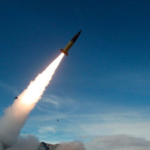

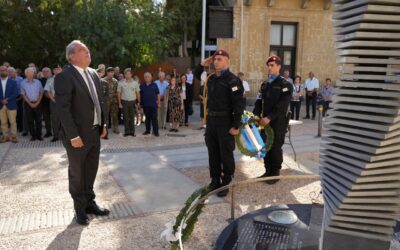
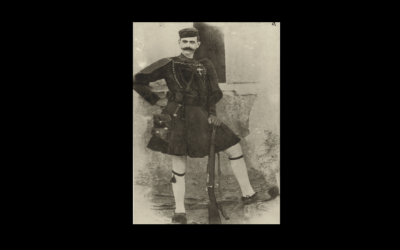
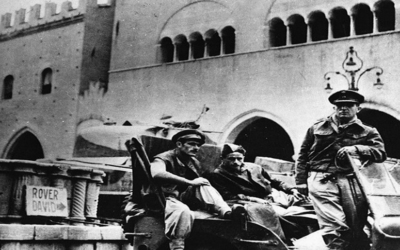
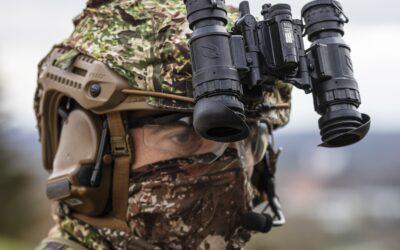



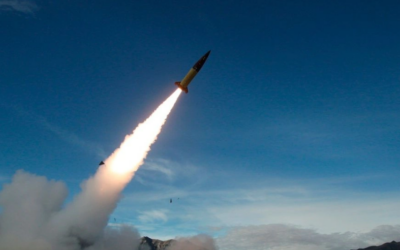

0 Comments